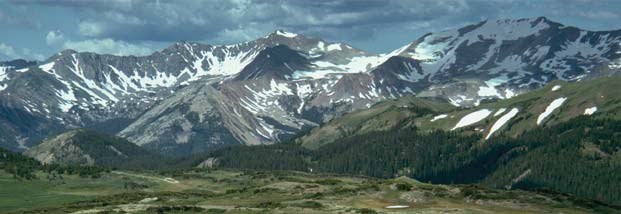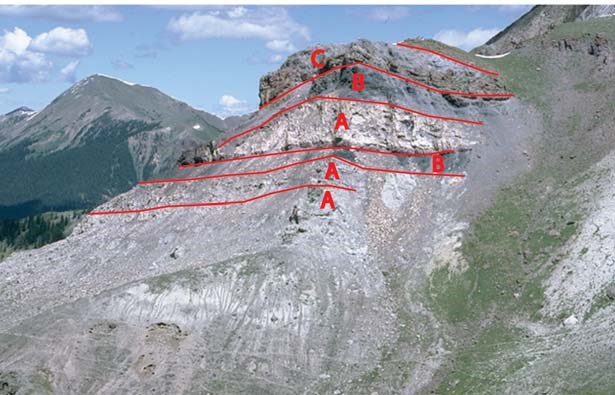Last updated: November 8, 2022
Article
The Formation of the Never Summer Range

The Question: What is the chemical composition of young volcanic rocks in the Never Summer Range?
The majority of Rocky Mountain National Park is composed of 1.4 to 1.7 billion year old granite and gneiss; therefore, the Never Summer Igneous Range is unique in that it contains the youngest bedrock and only volcanic rock in the park. This Range is composed of mafic (iron and magnesium rich) to silicic (silica and aluminum rich) extrusive volcanic rocks including basaltic andesites, rhyolite lavas and ash flow tuff and intrusive igneous rocks that formed 27 to 29 million years ago. Geologists are interested in the chemical composition of these mountains in order to understand the recent evolution of the American continent. The Never Summer Igneous Complex represents the easternmost manifestation of the so-called “ignimbrite flare-up”, an enigmatic continental scale volcanic event that affected much of western North American during the mid-Tertiary (40 to 20 million years ago).
The Project: Analyze the bulk chemistry, chronology, and eruption rates of the Never Summer Igneous Complex.
Katherine Knox (University of Colorado at Boulder) collected samples from the intrusive and
extrusive rock units in the Never Summer Range. She determined the chemical and neodymium, strontium and lead isotopic compositions of these rocks samples, and identified their mineral contents using a polarizing microscope. She used a process called 40Ar/39 Ar dating, which uses the radioactive decay of argon contained within minerals to determine the age of the rock. Knox used these ages, along with the volumes of the extrusive rocks determined using the geographic information system software ArcGIS, to estimate volcanic eruption rates.

The Results: The Never Summer Igneous Complex formed from the melting of the upper mantle with some crustal contamination and magmatic differentiation.
The Never Summer volcanic rocks progressed in composition from mafic to salicic through successive eruptions. Chemical comparisons reveal a relative enrichment of lead and a depletion of titanium and the rare earth elements europium and strontium. The Never Summer Igneous Complex is probably derived from melted upper mantle, though inconsistencies in isotope ratios imply that parts of the earth’s crust melted and were included as the magma moved upward. Differences between the composition of older mafic and younger salicic rocks suggest that the Never Summer Igneous Complex may have included molted rock from diff ering depths during successive eruptions.
This summary is based on published, peer-reviewed and/or unpublished reports available at the time of writing. It is not intended as a statement of park policy or as a defi nitive account of research results.
For more information on the park’s research program, see www.nps.gov/romo
Written by: Ansel Bubel, Geoscientists-in-the-Park 2008 - Geological Society of America Date: 10/15/2008 Photo credit: NPS-RMNP
